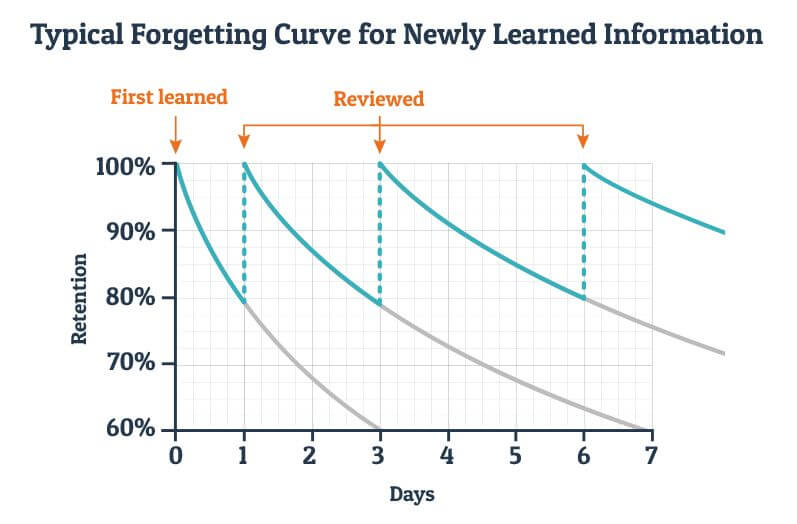I have an awful memory. Seriously! I can barely recall what I had for breakfast yesterday. While my memory is probably below average, I’m not alone in my struggles with recollection. As humans, our minds are not designed to store and retain every piece of data that enters through our senses.
We forget approximately:
- 50% of new info we encounter within an hour
- 70% within 24 hours
- And 90% within a week
It’s important to note that our forgetfulness is a highly beneficial trait. Imagine if you could remember the color of every car you passed this morning, or last week, or ten years ago! We forget the vast majority of what we experience because most of the data is inessential. Forgetting is an active, adaptive, and desirable process.
That said, we are often called upon in our academic and career journeys to remember important concepts and information. To do so, it’s crucial to understand our psychology and that of our students, so that we can learn and educate with our forgetting in mind.
What can we do to help students remember better?
Tips for overcoming the forgetting curve
1. Have a focus
Knowing that memory is selective and limited, it’s crucial to pick 1-2 key topics and focus on them during a class or training. Walking through myriad details and minutia is hopeless because the learner can only really keep a couple of big ideas in mind for the long term.
2. Space it out
Once you’ve picked a most important idea to hone in on, you must hammer the message home over time. Our SAT test prep students often report that their tutors will repeat the same strategical pointer, such as “read the question carefully and annotate”, so frequently throughout the prep that the tutor’s voice can be heard in the student’s mind when they are taking the actual SAT. That means the tutor has done a good job of stressing a certain concept’s importance.
3. Make a connection
A common memory enhancement technique is to connect a new idea to an old one. Connections are used to great success in history tutoring; by linking newly-learned events and people to more familiar ones, students can begin to think in terms of trends and retain core historical ideas and concepts for the long term.
4. Say it first, say it last
Due to primacy and recency biases, we often remember the first and the last things said by a speaker.
5. Deliver it in multiple ways
Because we all learn differently, explaining an idea in multiple ways is most effective. For example, one student might grow to understand the graph of a line visually, while another prefers the abstraction of an equation, and still another might best digest the concept by having it explained verbally. For many students, it will be ideal to have the algebraic concept of a line explained in all three ways, repeated over time, and reinforced through practice.
6. Revisit the information frequently
Luckily, while forgetting is a pervasive process, it is not random. It is possible to signal the brain that a particular piece of information is important and that it should be retained.
Thus, this tip is the most crucial. When you force a learner to revisit information in the hours and days after training, they are much more likely to retain that information in the long run.
If your goal is to produce long-term retention and behavior change, then what you do after training is more important than what you do during training.
Give us a call today to learn more about how we can help your student!


